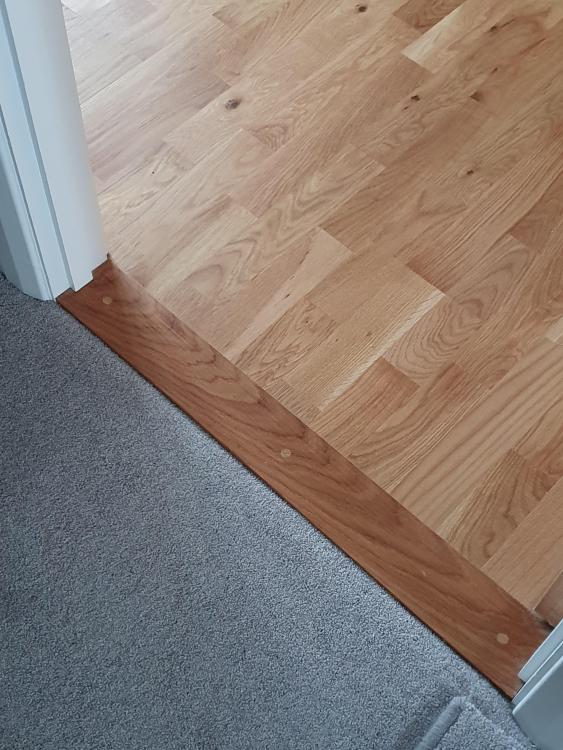Leaderboard
Popular Content
Showing content with the highest reputation on 01/18/23 in all areas
-
Afternoon guys While researching Heat pumps this afternoon and trying to justify the quote i have been given for a Nibe I came across a review online. The 10 best heat pumps 2023. The bosch CS7001iW came out on top. Now, i have nothing to say about this other than i have not heard them mentioned on this forum at all either good or bad. To be honest did not even know they made heat pumps. Has anyone fitted one? What are they like Regards keith1 point
-
Morning All, So I'm on the feed in tarriff as i'm sure many of you are, from around 2016 time. Majority of us, me included would be on a deemed 50% export rate of around 5p/kWh. Obviously there is also the newer SEG which was introduced, and Octopus Energy take that even further by paying a fixed 15p/kWh or an agile rate based upon market rates. Now up until recently, I thought if you were to move to the SEG, you would have to give up your Feed In Tarriff, which would have been a big no-no, however I have since learned that you can split off your Export, leaving your Generation Tarriff fully intact. So I have signed up for Octopus Outgoing Agile, and they are currently creating me a new unique MPAN for export only. I'll give Agile a shot, and if it doesn't pay, i'll go for the fixed rate. Even with the battery storage i'm still exporting a lot, so this should pay dividends. Not sure if this is common knowlegde, or if i'm just a bit late to the party. https://octopus.energy/outgoing/ From their blog: Under FiT guidelines, you get paid for being a generator, and paid for whatever you export. You won’t be able to receive FiT export payments whilst also being on the Outgoing Octopus tariff. However, you will still be able to receive your generation payments. When you sign up to the Outgoing Octopus, you will be required to opt out of your deemed export payments from your existing FiT supplier (but there’s no requirement to switch your FiT contract to Octopus.) For new installations (that is, after the FiT closure date of 1/4/2019) we’ll still require a copy of your Microgeneration Certificate Scheme (MSC) certification in order to get you onto the tariff. 50% Deemed was one option under FiT for getting paid for your export. This is often the case where an export meter wasn’t fitted and so it is was assumed that 50% of the solar energy generated would be exported (the other 50% being consumed). This is calculated from the installed potential output of the solar panels at the time of install. You may find you are still better off keeping the Deemed 50% than switching to Outgoing Octopus - for example if in fact you are exporting only 20%, or if the solar panels aren’t optimally oriented to supply the potential output or have deteriorated over several years. As the FiT Export rate is now 5.38pence and our flat rate is 15 pence then you are better off with Outgoing Octopus if (average over the year) you export more than around 50% of the installed capability. Hope this helps someone out there!1 point
-
My LG heat pump controller seems to take all summer to consume 1kWh doing nothing.1 point
-
ALWAYS look at the recent alterations first. That is always one of my questions "have you had ANY work done recently" It's a shame not everyone answers that properly, it could save them a lot of time.1 point
-
yeah. obviously that's an approximation but i'm still very happy. all those hours, days, weeks, months fitting insulation, AVCL and taping will hopefully be worth it in the end!1 point
-
Yes. You may well need hotter water for the rads than you do for the UFH. If so, when the rads are not calling for heat you want the heat pump to react to this by reducing its output water temperature to match the UFH. If you cannot do this then you cannot derive any economic benefits from the UFH.1 point
-
How about a 1ft square of cladding boards mounted on say 2" standoff blocks or variants of that idea.1 point
-
Is it like a 10m2 space? Have you ever been in a space that open. I know you’re not asking for design advice but you might need to look at how you’re going to divide and use it a bit before you move to the next step. you could put in a seating pit, shelves or something, furniture all looks a bit plonked.1 point
-
Builder's foam p!$$es me off big-time. Have a read - at my expense.1 point
-
So around -0.15°C/h Pretty good for an unfinished place.1 point
-
if i may join in here....our house isn't finished yet and isn't airtight (we have 2 openings to the garage and the garage doors are sheets of OSB on hinges (i have a piece of PIR leaning against a wall between the house and those openings). we only have heating in the basement at the moment. yesterday at about 4pm i turned off the heating as it's dry down there now and it's just using electricity for no real reason. when i left the build it was 19.6°C in the basement and 14.8°C on the ground floor. overnight temps were -3°C. this morning when i went and checked (at about 10am), the basement was at 16.8°C and the ground floor at 12.2°C. i'm pretty happy with those loses for now considering we're not even airtight and it's fricking freezing outside (Mr. Bigglesworth). so it really makes me feel good that eventually we should have an efficient and warm house with minimal heating loses. when i finally get it finished that is!1 point
-
Could be a home remedy for a few medical conditions 😉1 point
-
I could, but working on a load of more interesting data ATM. The main thing is to make sure air and water does not reach the pipes. Polystyrene is a pretty good insulator, just make sure that you dig the trench large enough to separate the pipes by at least 100 mm. Make the separators of polystyrene. If you open an account with a 'bead expander' there are a few on here that will buy extras off you, seems the only way to get them is to 'be in the trade'.1 point
-
Yeah totally agree neutral switching feels weird. I considered this just for some of the equipment inside my control cabinet: for efficiency it's nice to power down the DMX dimmer modules when not in use. They have a combined L terminal to power the dimmer and passthru to the lights being dimmed, but the N terminal is only required to power the module's internal logic (the light fitting's N line returns straight back to the RCBO, not via the dimmer module). So for simplicity it felt nice to just switch the N line on the dimmer module to power it down, as this way the switched load is only about 2W per dimmer, not the sum of all light fittings. I didn't do this in the end, even though the switched N line is purely internal to the cabinet and not out to the fitting. (In fact ultimately I replaced the cheap AlieExpress dimmers with Whitewing ones with much lower standby current per channel, and so now I just leave them permanently powered) (Full disclaimer: I haven't really followed the rest of your recent posts - it all seems technically possible but adds so practical overhead for something hopefully never needed, it is very far from the philosophy I followed I don't have much to add.)1 point
-
I do dozens of bathrooms with Ditra Matt glued down Absolutely bombproof Or if your not bothered about the build up A 10 mil insulation or backer board bedded on adhesive then screwd down the following day works well Most of the site bathrooms we do don’t want a step1 point
-
Thanks so much Peter. I don't fancy wrestling the old one out, nor aligning the new one so I'll keep an eye on any weeping but leave it be for the moment. Thankfully the EV change has resolved the heating issue and my elderly parents are now reclining at 21degC rather than 16. Thanks to all who contributed Mark1 point
-
If it is in an en-suite or WC the delayed start timer is really good. It gives you about a minute before it kicks in.1 point
-
Not while I've got a hole in my you-know-what......🤢🤮 They are horrible things, block open with lint / dust etc, and flap back and forth on windy days sounding like you've got bobby-knockers in your bathroom. They also do not stop warm air being 'pulsed' out of the room every time there's positive air being blown into the house. "That kind of money" will save you £££ in heating costs. Just ask if you can pay a pound a week Stop quibbling, get yourself down to TLC / other, and go make the magic happen. Don't forget the timer module is a separate item so you'll need that too ( when you go and buy one.... )1 point
-
Cement board way too brittle and a pig to install as it needs to be pilot drilled, countersunk, and bonded down with adhesive then screwed. Completely overkill. I have only ever laid cement board under tiles when installing / creating bespoke wetroom shower floors from scratch. Yes, correct size of screw is assumed. I use 20mm screws for 3.6mm ( aka 4mm ) ply, and 25mm screws for 6mm ply. You need to be putting all of your weight on the impact drill when screwing these in, or they'll just hit the ply and spin out ( 20mm screw vs 6mm ply ), so go with 25mm screws as they'll still be 3mm shy of the pipes when the heads are flushed with the top of the ply. Set the drill speed a bit slower to avoid any "whoops" moments Less haste, more speed etc etc.1 point
-
Quite right. It can allow the SE to be precise rather than sensibly cautious, and save more than its cost. I just mean, work with the SE and that is likely to be a relevant but not overblown report.1 point
-
1 point
-
Moot, as the grid would cover that / other 'spike(s)', batteries are for the 12 months use not per second @Nytram I've worked on 2 MBC TF houses in Oxon ( Gravenhill and Headington ) and I speak very highly of them always. Turnkey slab / frame from the same company is a massive stress relief, but also reduces build timelines as the frame typically goes into production the same time your founds are due to start. Other spilt arrangements may see the frame only going into production when the slab can be accurately measured, then you've a huge delay where there's zero activity on site. On a previous project they were 31 days total duration from a hole in the ground to a weathertight frame ( less slates / external cladding / doors / windows ( always "by other" with MBC so they can be in and out quickly )). Have had less 'fluid' experiences when being involved with other TF projects..... The house looks great; get your heads down and crack on!1 point
-
I've got 3.6kWp panels and a 3.2kWh battery alongside a 6kWp (heat out - so around 2kWp electricity in) ASHP. I keep the battery 50% full at all times in case of a power cut, so it's effectively a 1.6kWh battery. During a winter's day, there's more than enough solar for me to run the heat pump *and* charge the battery to full, as long as it's sunny. I seem to be topping out at generating ~10kWh and exporting 2kWh of that (so if I was happy to run the battery down, I'd rarely be exporting anything). If the heat pump chooses to run at full just after twilight, it takes the battery from full to 50% in about an hour. I could save it for overnight use instead if I wanted to by prohibiting discharge until midnight - the settings are flexible enough for that. I get 15p/kWh for exported energy, and import at 33p, so a grid round-trip for energy that could otherwise have gone to the battery is ~50% efficient. The battery does much better than that, but there's the capital costs to take into account. If your heat pump will use a lot more power than your solar panels, it probably makes a lot less sense ^^.1 point
-
Very exciting! I'm afraid it takes a little longer to go up... Hope all continues to go smoothly for you1 point
-
That’s some plot! Well done. I look forward to following your journey. thanks for the photos. I can’t wait until we’re finished and can demolish our bungalow.1 point
-
Your house is pretty much the same size as mine, although mine a single storey, so most likely a bigger heat loss; way more floor and roof to loose heat too. Whole house is done with 7 loops and one zone, pipes are on 300mm centres. Even before Christmas at -9 our flow temp was only 34 degs, housecat our chosen 19 degs. We have just over 500m of 16mm pert-al-pert pipes in the floor. Mine started with loads of zones and it just didn't work. Doing it again I would do 200 to 250mm centres to make the floor more responsive. Things to do A heat loss calc. Your max heat loss could be closer to 3 to 4kW. Download a copy of loopcad, and build your house and do a proper design your self. If you single zone or two zone with the correctly sized heat pump you should not need a buffer. Electric towel rads. Do bathroom at 150mm centres, you can get them warmer than the rest of the house on same flow temp. Or electric UFH. Once you know size of heat pump shop around, call people once you have internet prices, they will all try to beat others prices. I ended up buying a 6kW heat pump for £1300 the other day, from eBay, so there are bargains out there. Viesmann sell the same heat pump for over £4k.1 point
-
BUILD edqdwdwded your own rig. Ingredients. 1. A sheet of OSB. 2. A scrap car radiator fan. 3. Some screws. 4. Some duct tape or similar. 5. A length of wire and crocodile clips. 6. A length of electrical conduit 7. A candle that will slot into the conduit. Total cost < £100. Method. 1. Measure an opening ( outward preferably) window sash and cut the OSB to the same size so it slots in against the seal in place of the sash. 2. Cut a suitable hole and screw the car radiator fan into place in the OSB. 3. Tape the OSB and fan to ensure no leaks in the window. 4. Use the wire + crocodile clips to connect the fan to your car battery. (Leave the car running to avoid a flat battery) 5. Ensure the fan is pulling air out of the house. ( You can reverse the fan or swap polarity on the battery if you get it wrong) 6. Go room by room with the back of your hand (big leaks) and the candle in the conduit ( small leaks) and seal each and every tiny hole with proper expanding foam or age proof flexible sealant.1 point
-
We had the same dilemma looked at various solutions. In the end we got 20mm oak thresholds made, that just stud proud of the 19mm thick wood floor. Screwed down and pelleted. Then the carpet fitters just laid up to it as the would any other area. Small run of oak flavoured silicon between the threshold and timber floor is enough.1 point
-
Go Gas Boiler with PV - but with a caveat. I'll give you my thoughts based on my personal home situation and my professional observations (we have the gas/ASHP/PV/Sunamp debate for new buildings weekly). I have PV and a gas boiler, the boiler is relatively cheap to run, its not even a year old (I made the call to replace with gas and not go ASHP last Feb). On a crisp bright winters days I can also heat some space I am using with some small electric heaters, for free if I want. For example I am looking at electric UFH for the bathroom and adding an electric option to my office and maybe loft room so I can make use of day time sun for heat in the room I occupy most, I can whittle away at my energy import and balance things out a bit through the year. I then have the gas boiler for the simple hot water production and on demand space heating when needed. I am currently working on building services designs for a 4 residential developments ranging from 7 storey flatted development in London to smaller blocks of flats in Glasgow and a house, some will be gas boilers with a PV allowance per house, some will be ASHP some will be Sunamp's charged straight off the grid. When looking at heat loss for these flats or houses and the heating method we cringe at the cost some of them will cost to heat. The fact is electricity is expensive, things like ASHP's are expensive the whole lot will just be painful until electricity becomes cheap to produce nationally/globally. If it was me building from new, I would stick a gas boiler in, a hot water cylinder with a water coil and element fed from PV, more PV than I need, and electric heating options in various spaces, I would spend a bit more on insulation and try and create a building which needs little heat. I would leave in allowance in space and technical spec for more PV and battery storage when prices come down and my long term plan would be to lose the gas boiler, well, if that is the way things go, maybe we will see an alternative gas supply and boilers to suit, in which case I will be pleased I have the gas infrastructure. My thinking is that this will give me green credentials and cheap electricity to use however I wish, but the low capital cost of a has CH system but with options further down the line. If I go ASHP now, then to my mind, I have just signed away a lot of money on technology the industry is frankly still having trouble with, I also diversify my energy sources, I do think we are going to see more energy issues in the coming years, it could be gas or electricity shortages or sever price hikes. If you had told Germans 2-3 years ago, look boys you might run out of gas and struggle to keep the heat on most would have laughed, it is very real now. Which is why I am keeping my options open, it is why I have a diesel and a petrol car, at present my petrol is cheaper to run as Petrol is 20p a litre cheaper round here and my Petrol & Diesel get almost the same MPG. Spend some of the ASHP money on future proofing, make allowances for things you might install so you are sitting pretty and can, if you want, when technology and prices improve and maybe electric costs stabilise, go ASHP in the future. High temp versions are coming through now that will work as a direct replacement to a gas boiler without rad changes, maybe even increase panel size so that come slightly lower temps you still have good heating from them.1 point
-
i was trying to do something correctly for a change. and the thought of unplugging >15 hep2o pushfit pipes from each manifold was something i was hoping to avoid0 points
-
Nah . Do like me . Stick ‘em on the wall . Water on . Soon find out if there’s a leak 💪0 points
-
0 points
-
Why? Spend the money on beer or whatever other happiness-inducing activity puts a smile on your face!!!0 points













